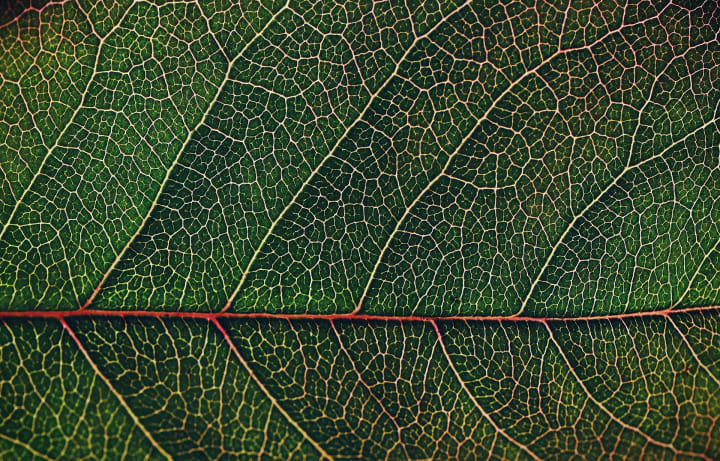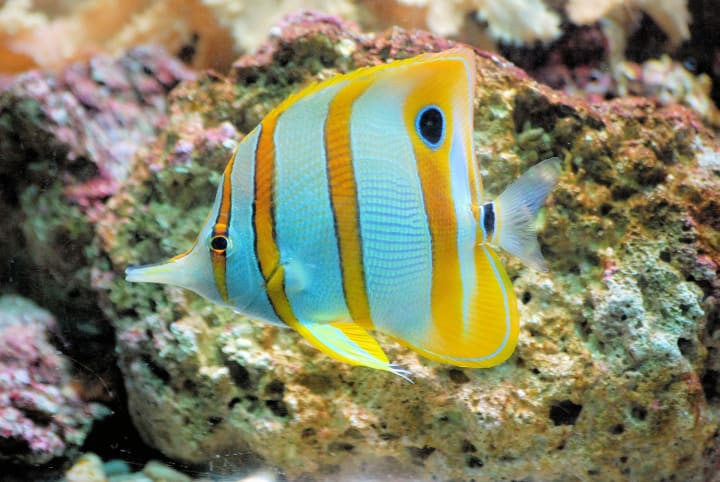Life in an Aquarium
Health Benefits of an Aquarium

An aquarium at home can help you cope with stressful situations. Continue reading to learn more about life in an aquarium.
What is an Aquarium?
An aquarium, also known as aplural aquariums, is a vivarium that houses water-dwelling animals and plants. It is often kept in a glass-sided container made of high-strength plastic or glass. Around 60 million people worldwide are passionate about aquarium keeping.
Important components of an aquarium
Aquatic Plants
Aquatic plants play the largest role in aquascaping. They are essential for the survival of your tank and create stunning displays of greens, reds, and violets. If you are interested in aquascaping, it is important to understand the needs of these plants as well as how to care for them.
Your aquascaping journey will begin with an understanding of how aquatic plants function, how they are created, and what to do to make them thrive.
Nature's aquatic plants

The ecosystem of a lake or river is dependent on aquatic plants. Most aquatic plants are found in the littoral zones, or shallow areas, of lakes and rivers. These plants play an important role within the ecosystem of a lake or river. They provide habitat for fish and are a source of oxygen for all living organisms in the water.
It is known that aquatic plants in lush areas can provide prey shelter and an ideal environment for fish seeking to spawn.
A second important function that aquatic plants play is to remove pollutants and excess sediments from the water.
What is an aqua plant?
Hydrophytes and macrophytes are other names for aquatic plants.
An aquatic plant is simply a plant that has successfully adapted to aquatic environments such as lakes, rivers (freshwater), or oceans (saltwater). Hydrophytes and macrophytes are other names for aquatic plants.
Photosynthesis

Transforming sunlight energy into plant foods
Photosynthesis refers to the process of converting oxygen into carbon dioxide within plants using light's energy. This process involves the absorption of CO2 and the liberation of O.
These tiny pores, also called stomata, on plant stems or leaves allow these gases to enter and leave the body. The light and tiny green pigments called chlorophyll in plants' cells are what power the transfer.
These pigments chemically combine water and carbon dioxide to create simple sugars like glucose. This is an important source of energy.
This is when oxygen is released into the water as either a by-product or waste. This oxygen is then used up by organisms like bacteria, fish, and invertebrates. At the water's surface, excess oxygen is released into the atmosphere.
It doesn't matter what type of aquascaping you choose; you should have some knowledge about the anatomy and biology of any fish species you will use in your aquascape. Continue reading to learn more about tropical fish and their natural habitats, as well as how to keep them happy and healthy in your aquarium.
Tropical Fish

Natural habitats
Fish can be found in all water systems around the world, as they are common in nature.
Diverse fish habitats around the world have led to the evolution of many different shapes, sizes, and colors. Fishkeeping is a fascinating hobby. Aquascaping is a hobby that allows tropical fish to be grown in a variety of geographic areas.
The majority of aquarium fish come from Asia, Africa, and Central America. Currently, there are approximately 1800 species of tropical fish involved in the international aquarium trade.
Many tropical fish species are found in the Amazon basin.
What is a fish?
Fish are considered vertebrates, which means that they have a backbone.
Fish are usually cold-blooded (ectothermic). The body temperature of cold-blooded animals cannot be raised above the environment. They get oxygen through their gills. Most species have two pairs of fins that act as arms: a dorsal, a caudal, and other fins. These fins allow them to swim in the water.
Scales cover almost all fish. These are thin, protective overgrowths on their outer skin. The slimy layer of scales is a thin, sticky coating that protects fish from bacteria and parasites.
Nutritional requirements and diet for fish
Fish feed generally can be divided into two types: dried and fresh live food.
It is simple to feed your aquarium fish. There are many food choices available in today's pet shops. Fish feed can generally be divided into two categories: fresh and dried. Although dried foods are easily found in specialty stores, it is more difficult to find live foods like bloodworms or brine shrimp.
There are many types and sizes of dried foods. You should choose one that suits your fish's size and dietary preferences. Some fish prefer a plant-based diet. These are the most popular:
Sticks and pellets are primarily for larger fish like discus. Pellets will float for a time, then sink.
Granules: These are great for bottom dwellers like Corydoras. They sink as soon as they touch the water.
Flakes are suitable for fish that swim at the top level of an aquarium. Flakes can float for long periods of time and can be powdered to make them into fries.
Fish food: pellets, granules, flakes, tablets
You can supplement your dried food diet by eating occasional meals made from fresh, live foods.
This will ensure that your fish are healthier and better prepared for breeding. There are many live foods that you can choose from, such as:
Live foods: Artemia salina Brine shrimp is a small crustacean that lives in salt water. The larval form of brine shrimp, called nauplii, is a great option for feeding the fry. It's also very popular among aquarists.
The bloodworm (Chironomus), which is not a worm but a midge larva, isn't actually a worm. This is a good food source for small fish like neon tetras and rasboras.
The larvae of mosquitoes are eaten by fish that live on the surface. They encourage breeding behavior.
Daphnia, also known as water fleas, can be used for colour enhancement.
Live foods: artemia, bloodworms, mosquito larvae, and daphnia
Artemia, bloodworms, and mosquito larvae are some of the most popular live foods.
Other foods you might like include sliced cucumbers, carrots, and beef hearts, as well as mussels (for prey fish).
The rule of thumb is to feed your fish every 2-3 minutes. This should be done between 2 and 4 times per day.
Aquarium invertebrates

Aquascaping is a world of slow crawlers and odd-looking critters. Invertebrates, also known as freshwater aquarium snails or shrimp, play a variety of roles in your tank. While some are just pretty to look at, others perform more important tasks, such as keeping your aquascape algae-free.
The planted tank is home to invertebrates.
You can divide freshwater aquarium invertebrates into molluscs and crustaceans.
Invertebrates refer to animals without a backbone (vertebral column). There are two types of freshwater aquarium invertebrates: molluscs (snails) and crustaceans (shrimps, crayfish, and crab).
Some crayfish species are safe to keep in an aquarium with a lot of plants, but crabs tend to grow larger.
They are aggressive towards other aquarium inhabitants and can be destructive to their environment.
The last thing you want is for them to begin chopping up your aquascape. We'll leave the crabs out of the aquascaping.
Aquarium algae

Anubias leaves with BBA algae
Although aquarium algae is often considered the greatest enemy of aquascaping, it is normal and healthy for your tank. You can be a Jedi Aquascaper once you have mastered aquarium algae!
Algae can be classified as aquatic organisms that are capable of photosynthesis. Some algae are monocellular (green algae and diatoms; cyanobacteria); while others, such as giant kelp (Macrocystis pyrifera), have multicellular structures.
Aquarium algae causes
Algae growth is most commonly seen in freshwater aquariums due to:
Keeping your aquarium in direct sunlight
Avoid areas near windows when looking for a new location to house your planted tank. Shaded areas are best for your tank.
Overfeeding Your Fish
Your fish should be fed only 2-3 times per day. Also, ensure that the food is eaten within 3 to 5 minutes. To avoid ammonia or nitrite overflow in your tank, immediately syphon any unfinished food.
Overstocking Your Tank
You should keep a suitable number of fish to fit your tank's size. A general rule of thumb is to keep one inch (2.54 cm) of fish per gallon (3.8 litres) of water.
Regular Water Changes are not Recommended.
You can reduce the amount of nitrate found in your aquarium. This will help prevent algae overgrowth. Depending on the stock level, you may need to change 20 to 50 percent of your tank’s water.
Lamps Left on For too Long
Your aquarium lights should be on for between 8 and 10 hours per day. To control when the lights turn on and off, use a timer.
Poor Water Circulation
Make sure you choose a filter that will allow for adequate water circulation. Algae growth can be reduced by the efficient movement of fertilisers and carbon dioxide in your tank's water.
- The most common algae found in a planted tank.
- Black-Beard Aquarium Algae (BBA).
- This is one of the most difficult algae to get rid of in an aquarium.
- Blue-green aquarium algae.
- It is also known as "slime," "smear," or "smear algae."
- Brown aquarium algae.
- This brown algae is also known as silica or gravel.
- Green aquarium algae.
- Green spot algae (GSA) is another name for hair.
- Green-Water Aquarium Algae.
- Algae from the Green Water Aquarium is often referred to by the term "algae bloom."
Bottom line
A home aquarium should bring peace, not anxiety. With proper setup, you can reap all the health benefits of an aquarium while keeping it clean and well maintained.
About the Creator
Manpreet Singh Bhinder
I’m a content strategist, Youtuber, Website developer & Expert SEO Analyst. Working hard to grow my skills.
Follow Me - linkfly.to/manpreetsinghbhinder
Creators I Like - Cathy Holmes, Melissa Ingoldsby, Heather Hubler,






Comments
There are no comments for this story
Be the first to respond and start the conversation.